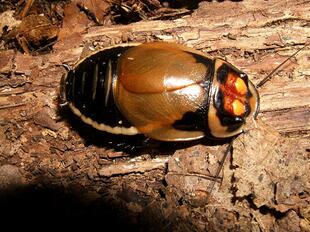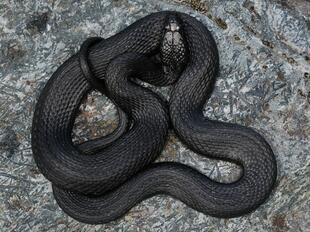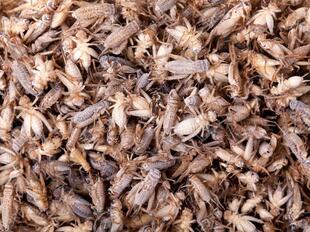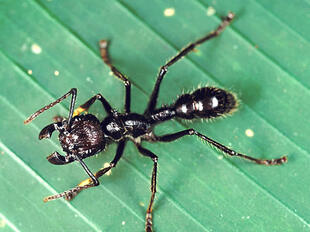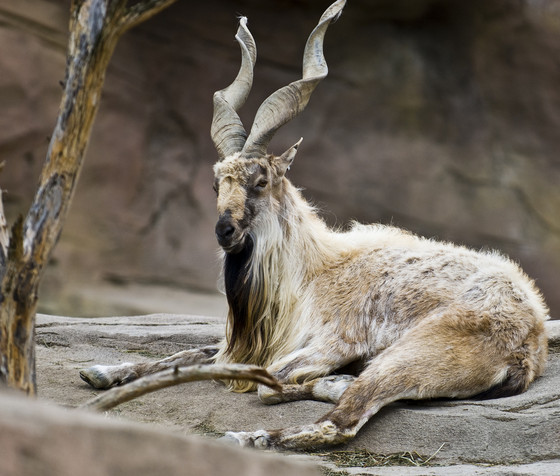
Markhor(Capra falconeri)
Phylum —chordata
Class — mammalia
Order — artiodactyla
Family — bovidae
Genus – capra
Appearance
Markhor stand 65 to 115 centimetres (26 to 45 in) at the shoulder, 132 to 186 centimetres (52 to 73 in) in length and weigh from 32 to 110 kilograms (71 to 243 lb). The coat is of a grizzled, light brown to black colour, and is smooth and short in summer, while growing longer and thicker in winter. The fur of the lower legs is black and white.
Markhor are sexually dimorphic, with males having longer hair on the chin, throat, chest and shanks. Females are redder in colour, with shorter hair, a short black beard, and are maneless.
Both sexes have tightly curled, corkscrew-like horns, which close together at the head, but spread upwards toward the tips. The horns of males can grow up to 160 cm (63 in) long, and up to 25 cm (10 in) in females.
Habitat
Markhorare found in Central Asia, Karakoram, and the Himalayas. They occur in Afghanistan, Pakistan, India (Jammu-Kashmir), Tajikistan, Turkmenistan, and Uzbekistan.
Behavior
Markhor are diurnal animals and are mainly active in the early morning and late afternoon.
Markhor live in flocks that usually consisit of nine animals. These flocks are composed of adult females and their young. Adult males are largely solitary. Adult females and kids comprise most of the markhor population.
These majestic animals have many predators and that's why possess keen eyesight and a strong sense of smell to detect nearby predators. Markhor are very aware of their surroundings and are on high alert for predators. In exposed areas, they are quick to spot and flee from predators. Their alarm call closely resembles the bleating of domestic goats.
Diet
Markhor are herbivores. They feed on various grasses, leaves, twigs, and shrubs.
Reproduction
Markhor exhibit a polygynous mating system in which males mate with multiple females every single breeding season. They mate in winter, during which the males fight each other by lunging, locking horns and attempting to push each other off balance.
The gestation period lasts 135-170 days and usually results in the birth of one or two kids, though rarely three. The young are born precocial (fully developed) and are able to walk soon after birth. Mothers nurse and protect their kids within 6 months and after that, they become more independent. Young male and female markhor become reproductively mature at 18 to 36 months of age.
The lifespan of markhor ranges from 11 to 13 years.
In captivity
For markhor, you need a spacious aviary with mountainous terrain. When keeping a group of animals, in order for all members of the group, even the lowest-ranked, to have access to food and shelter from the weather, it is necessary to install a lot of feeders in the enclosure and make niches for recreation.
In captivity, markhorare fed with hay, grain, as well as leaves and branches of trees.
 Russian
Russian
 English
English




















